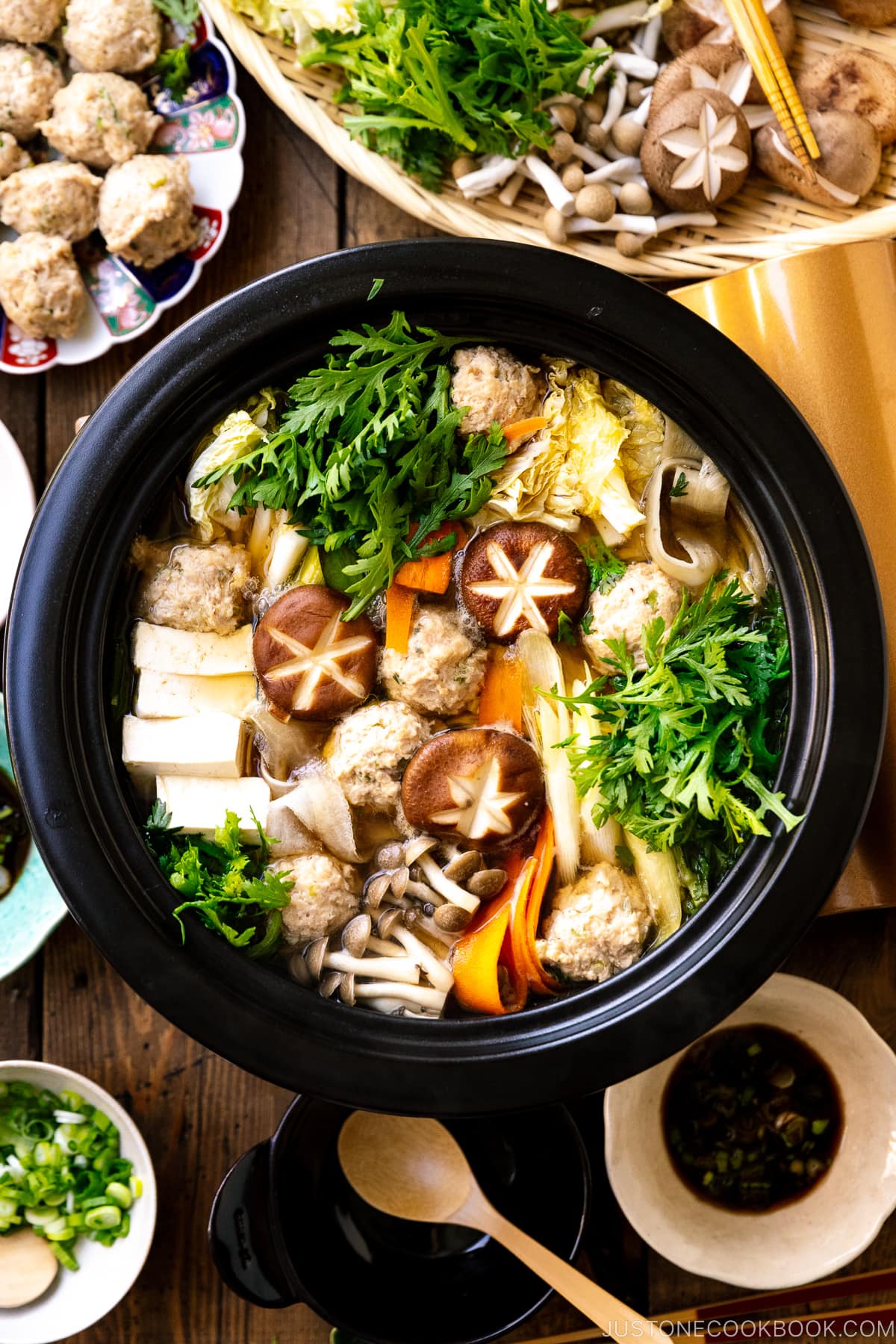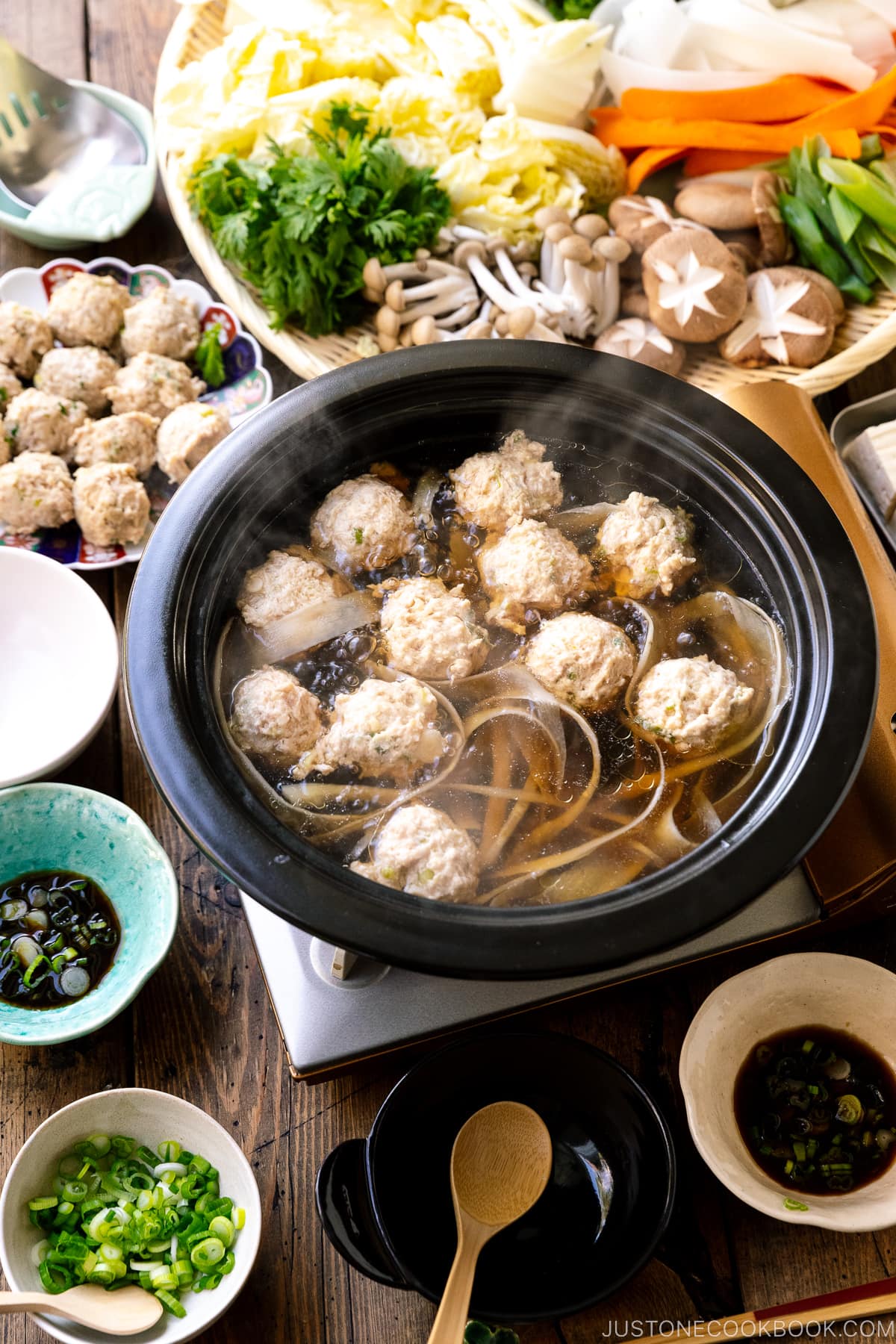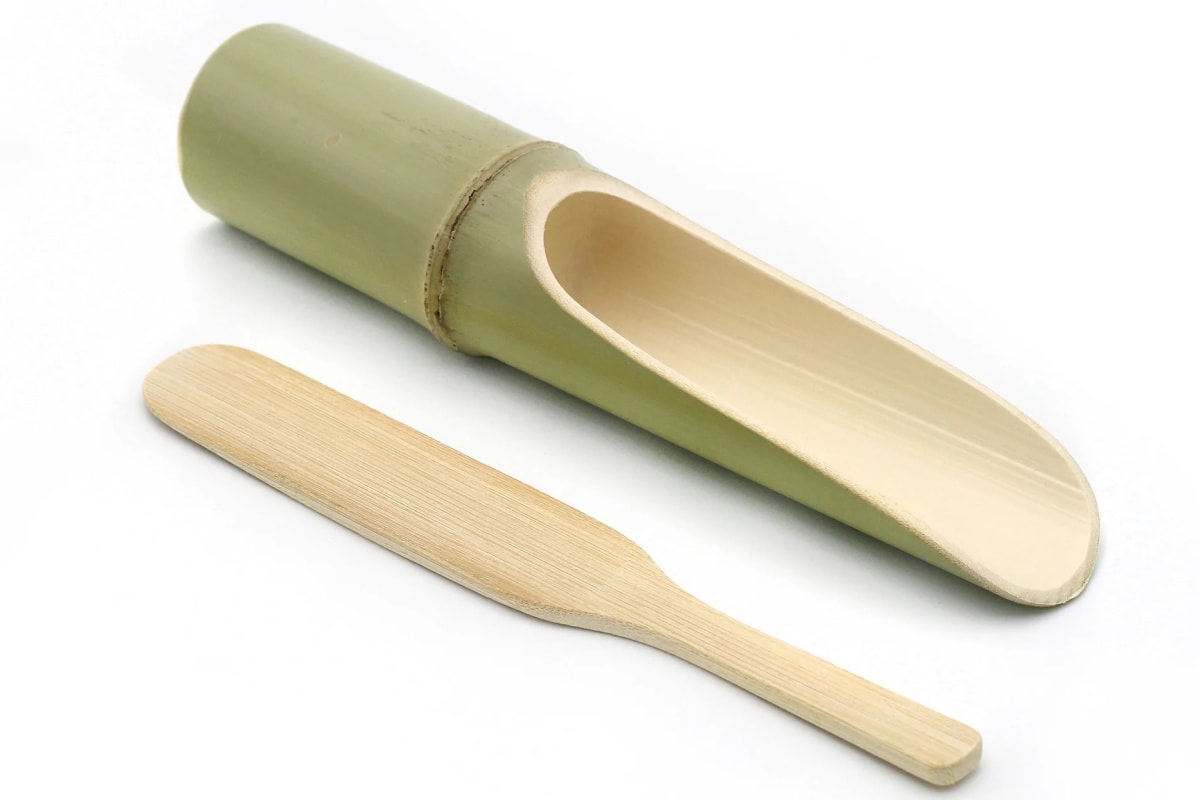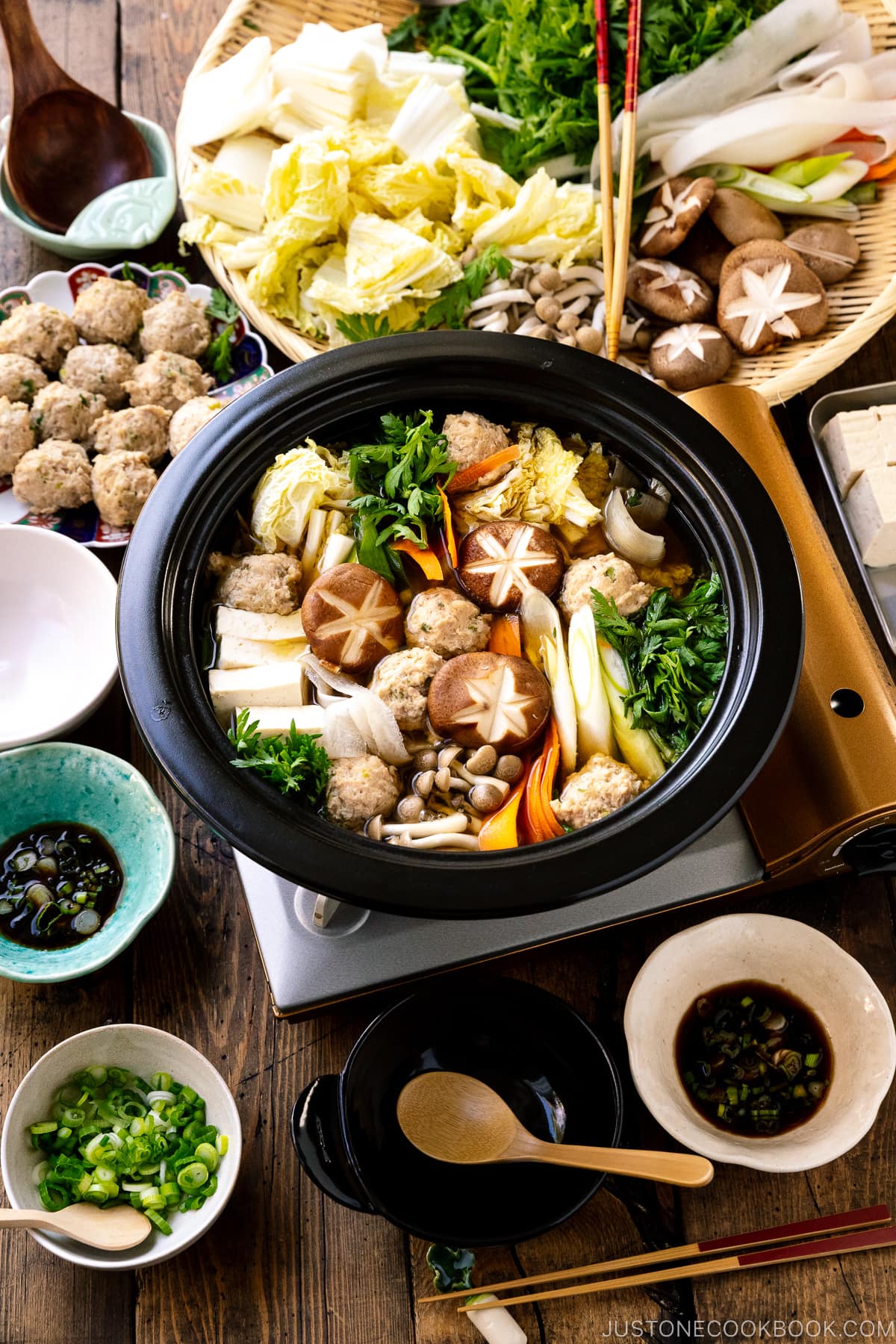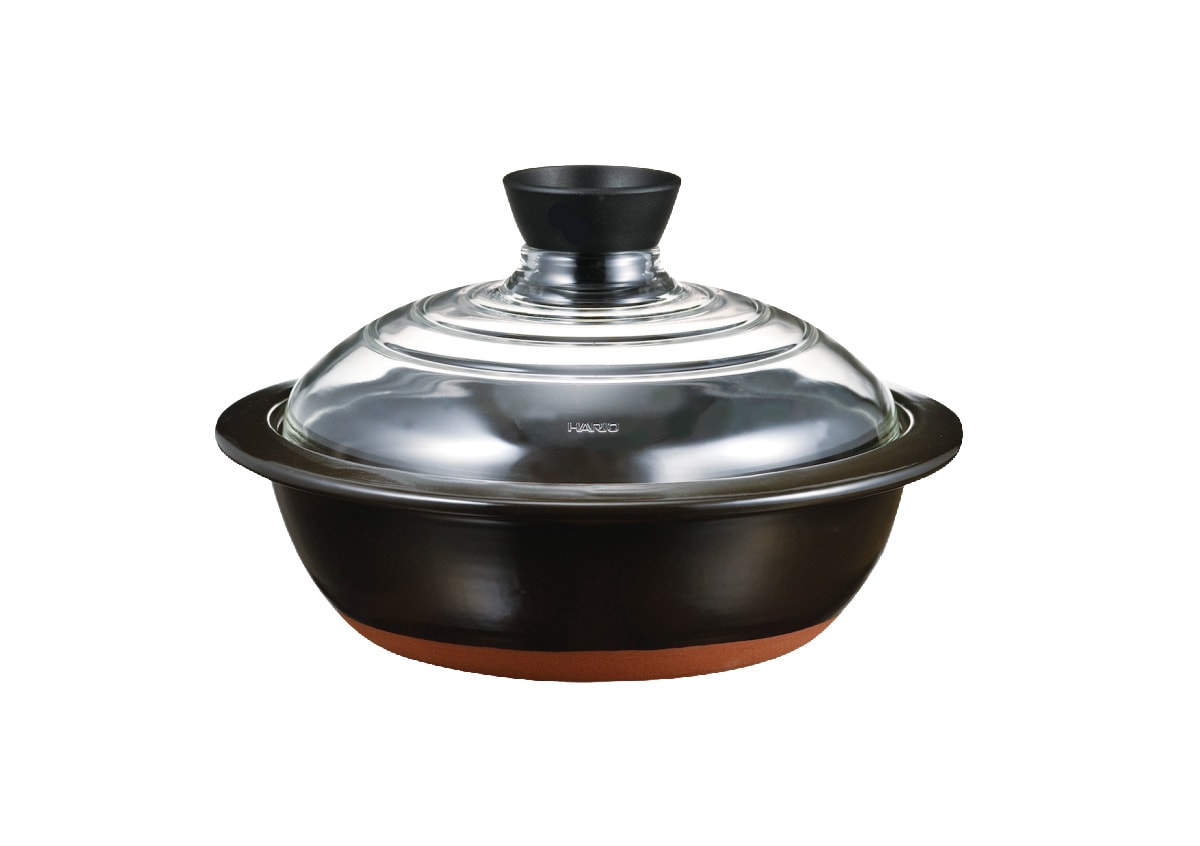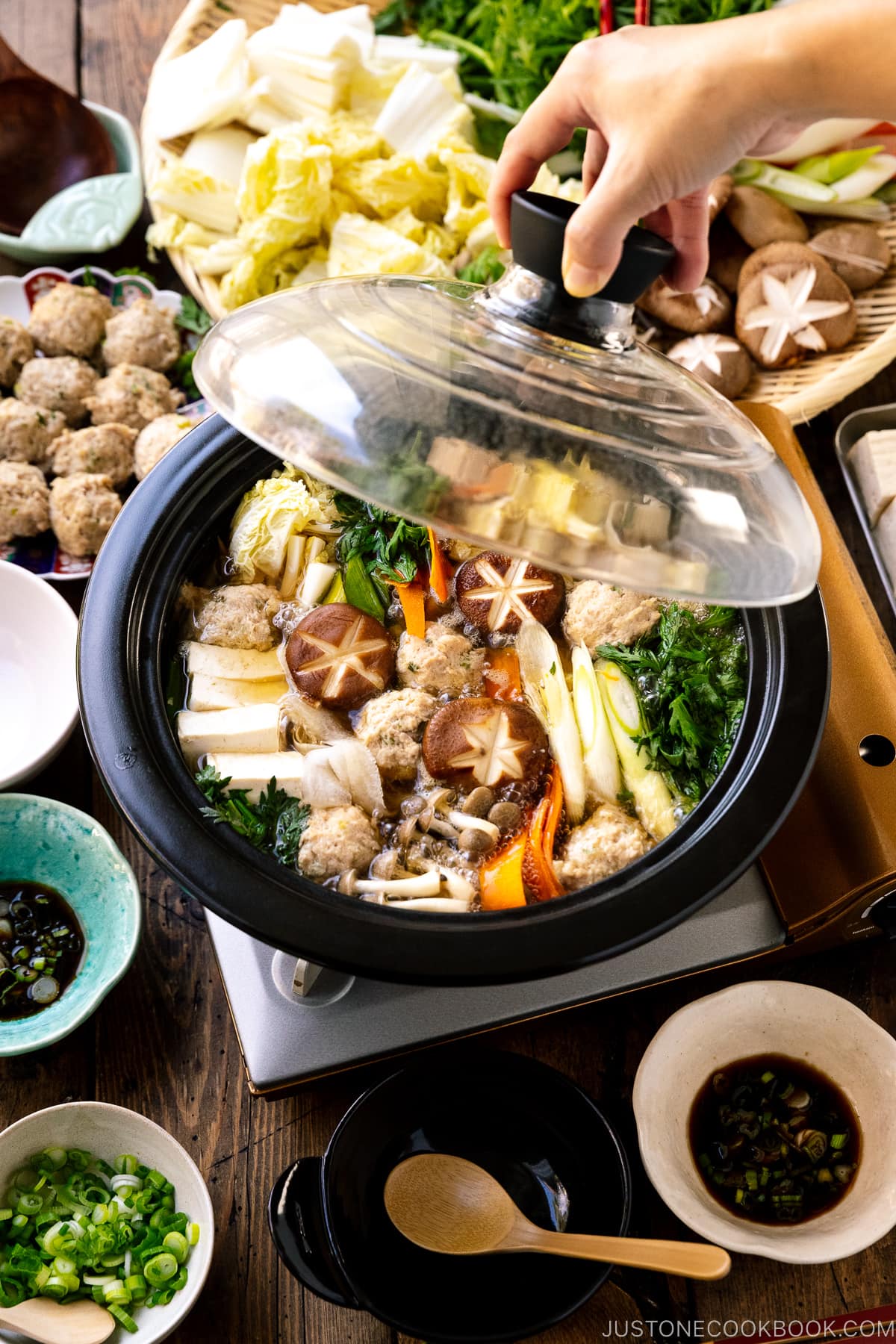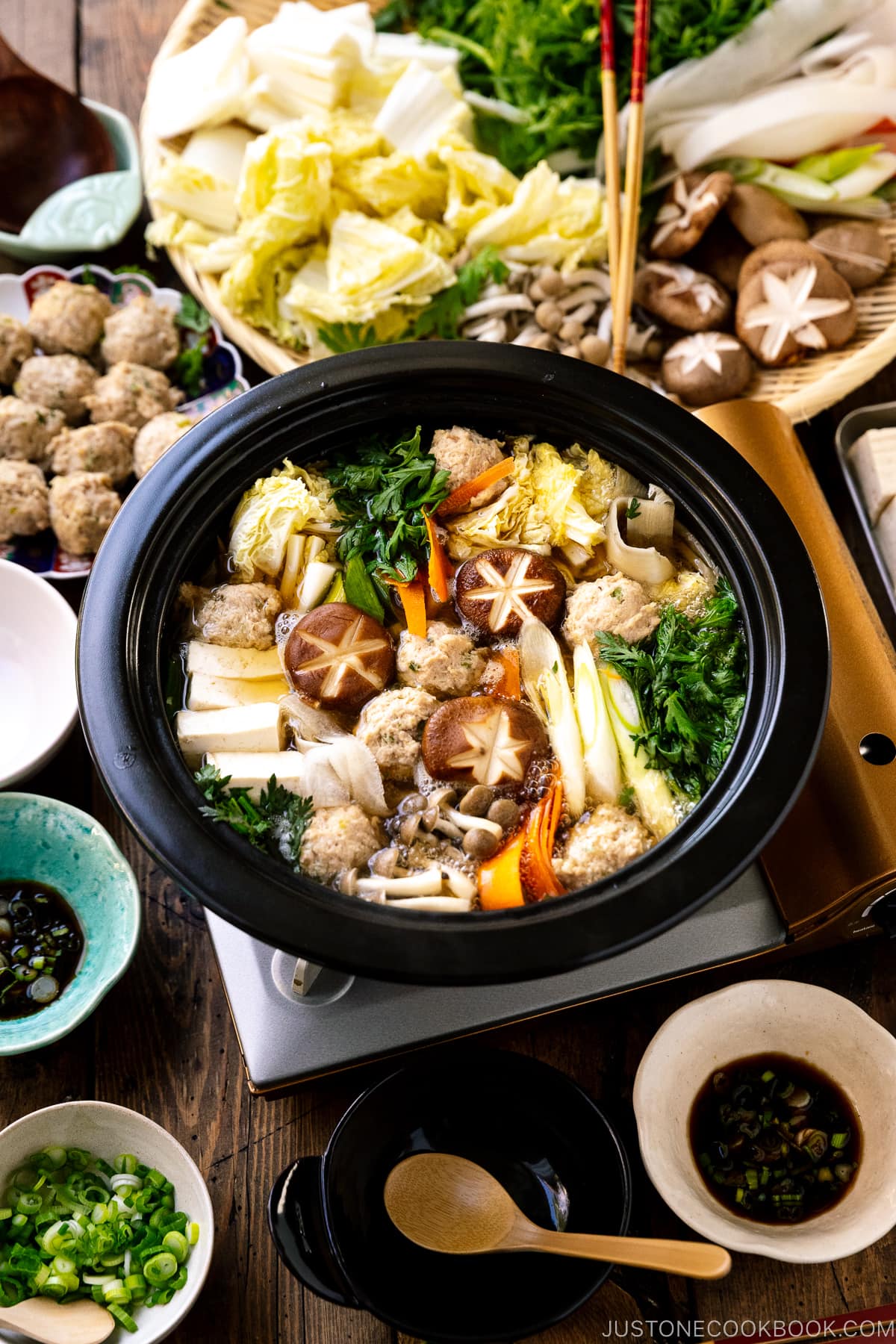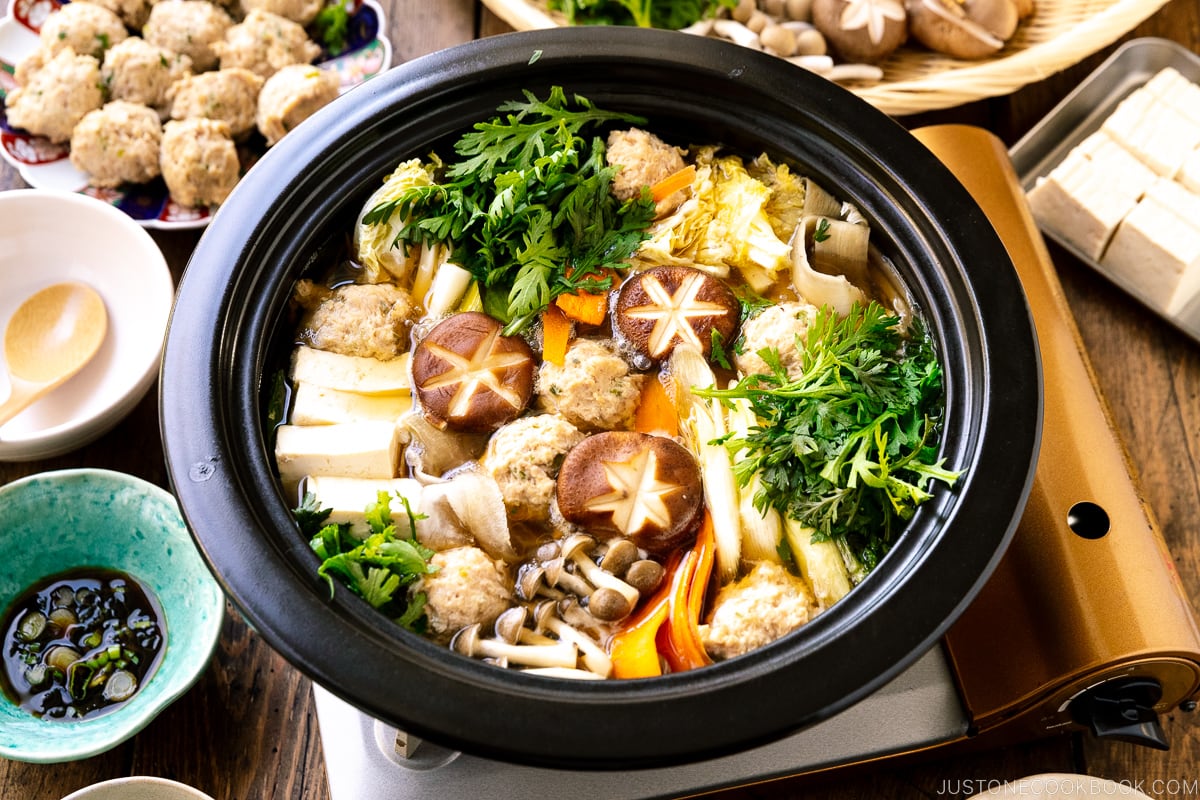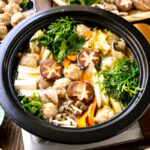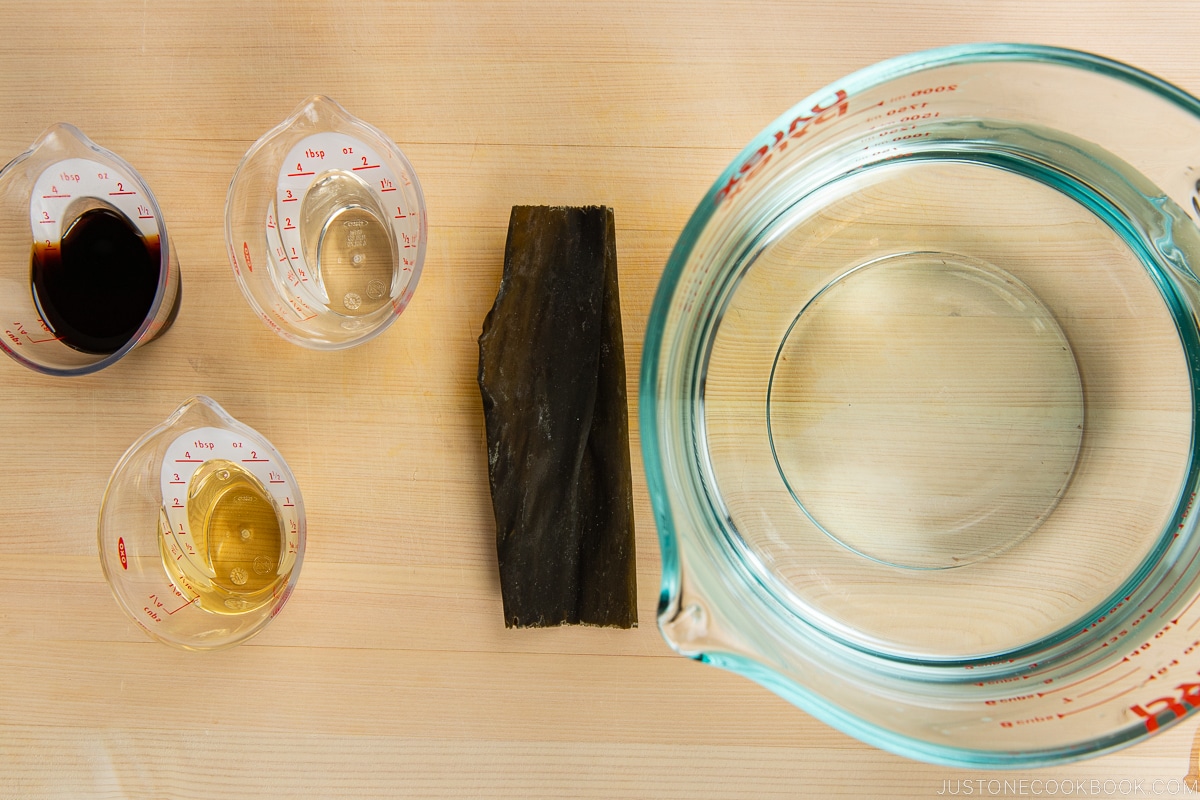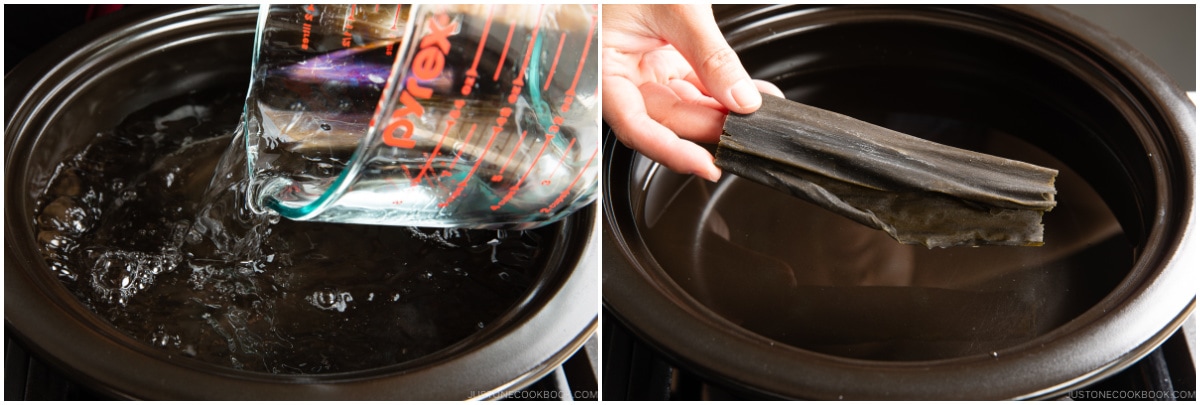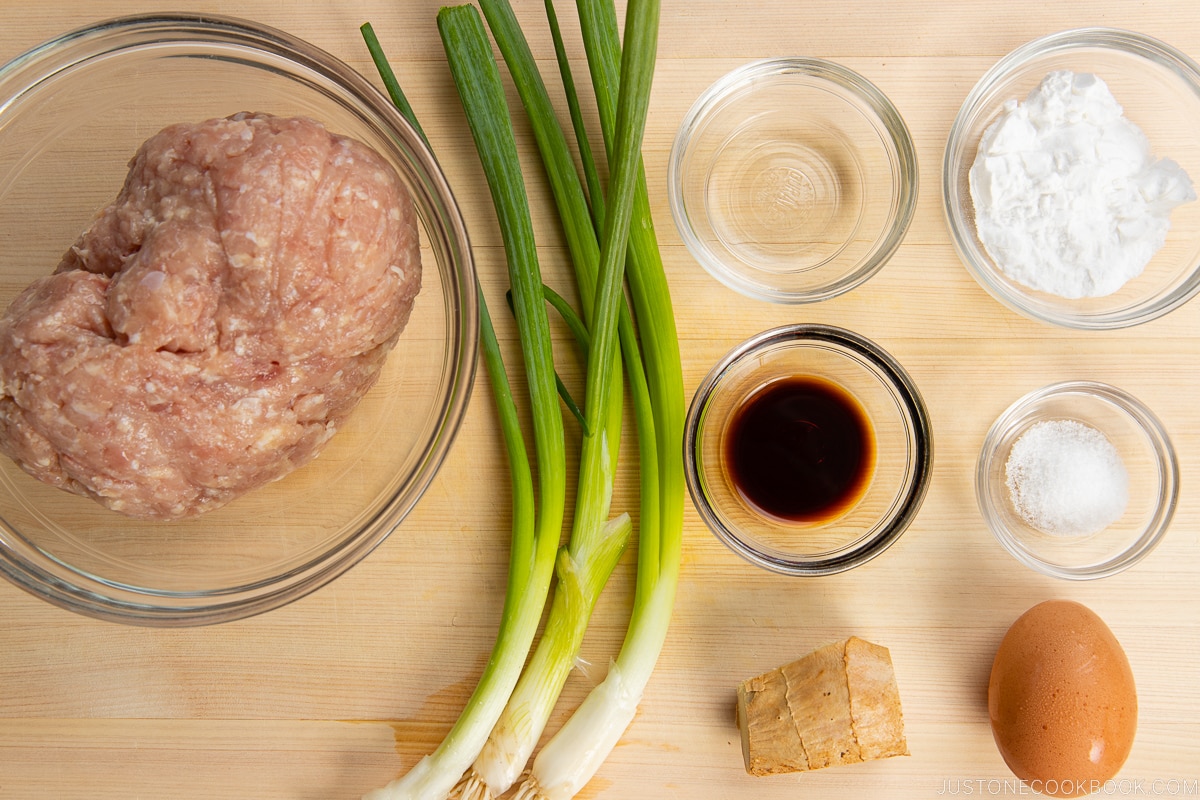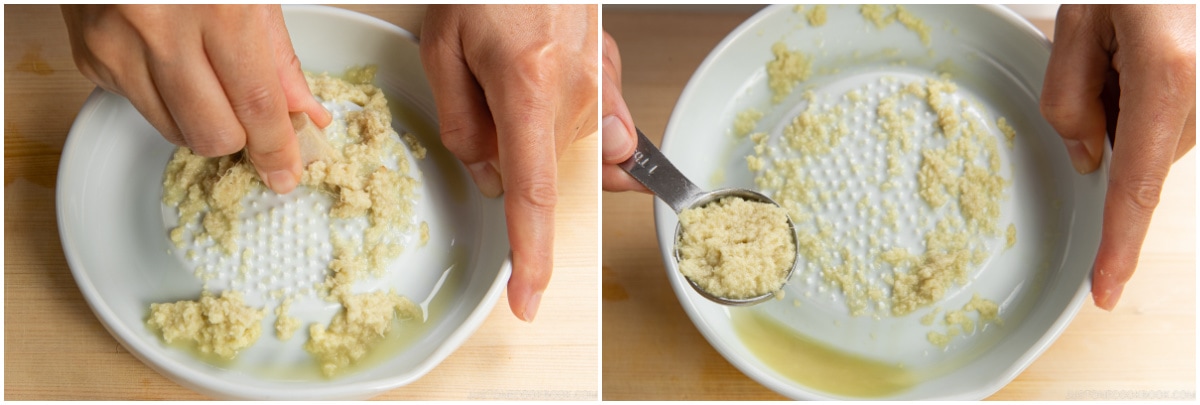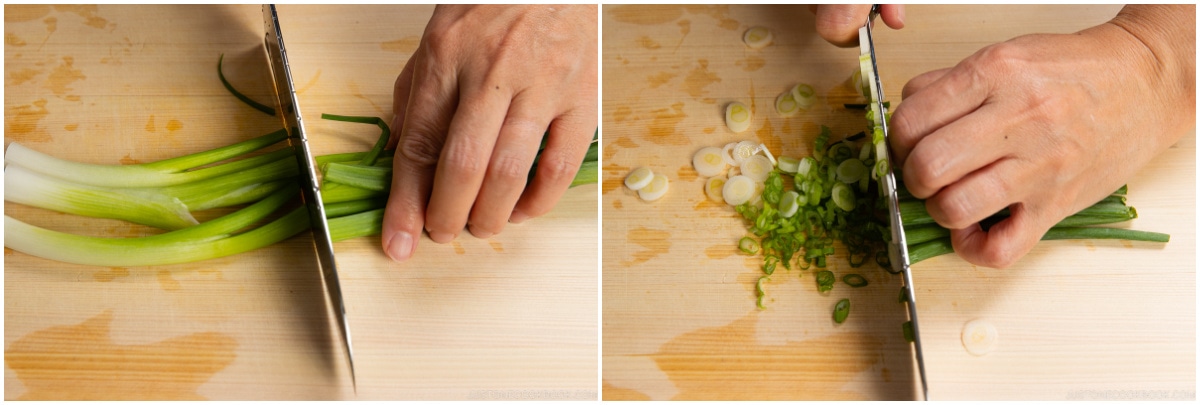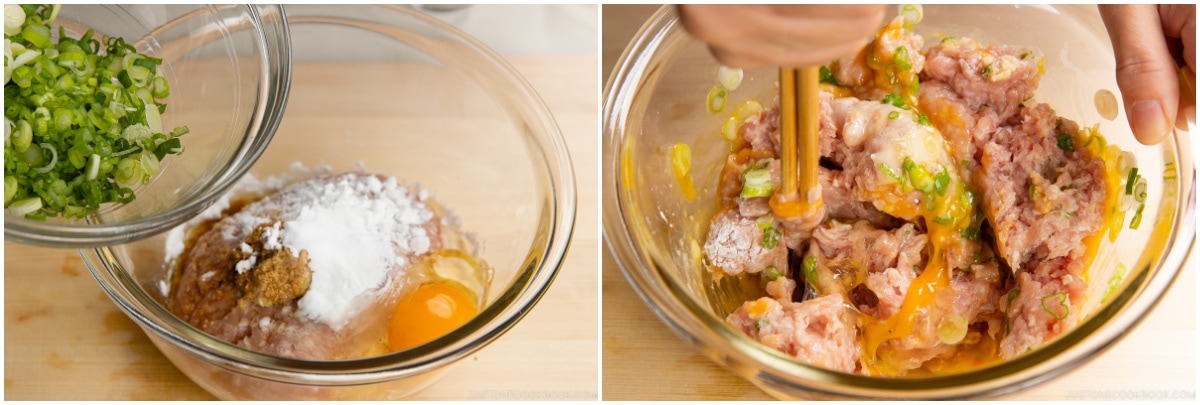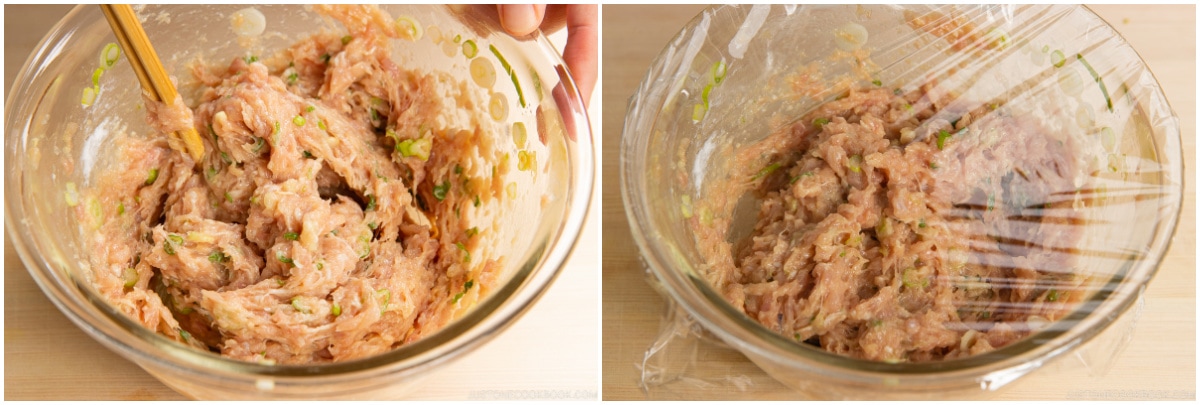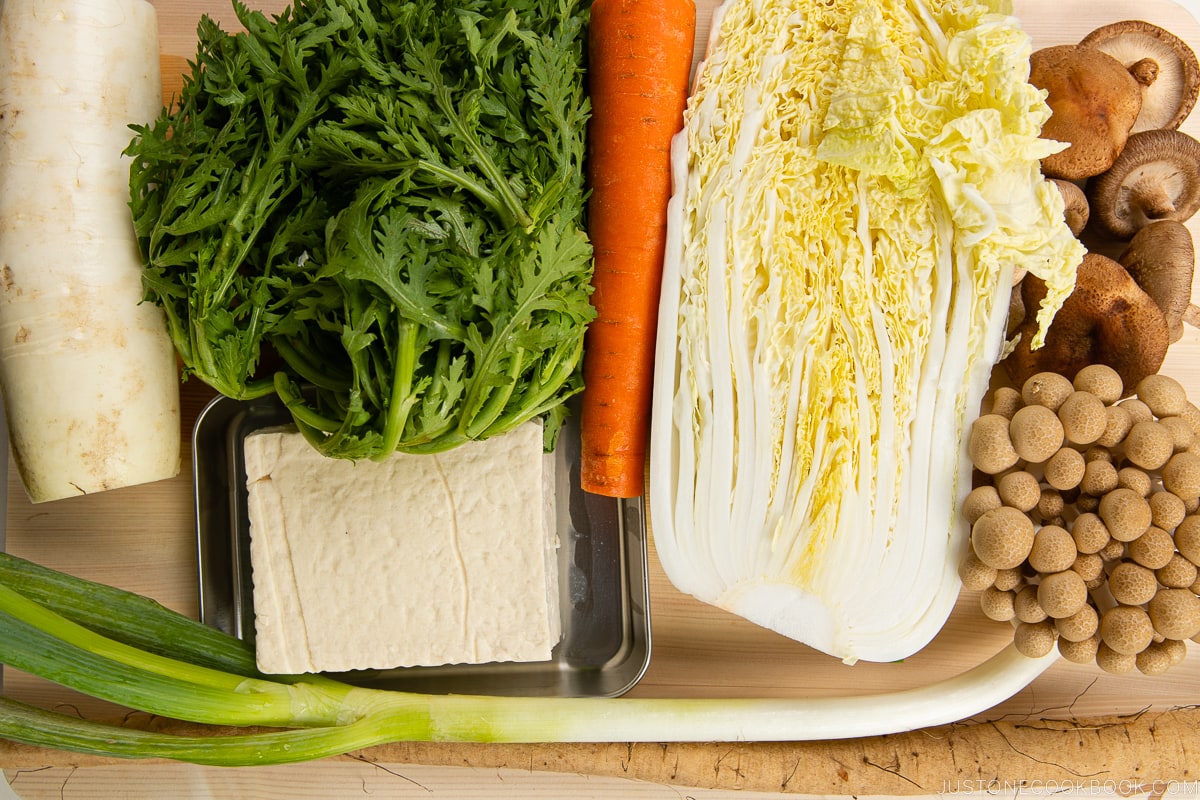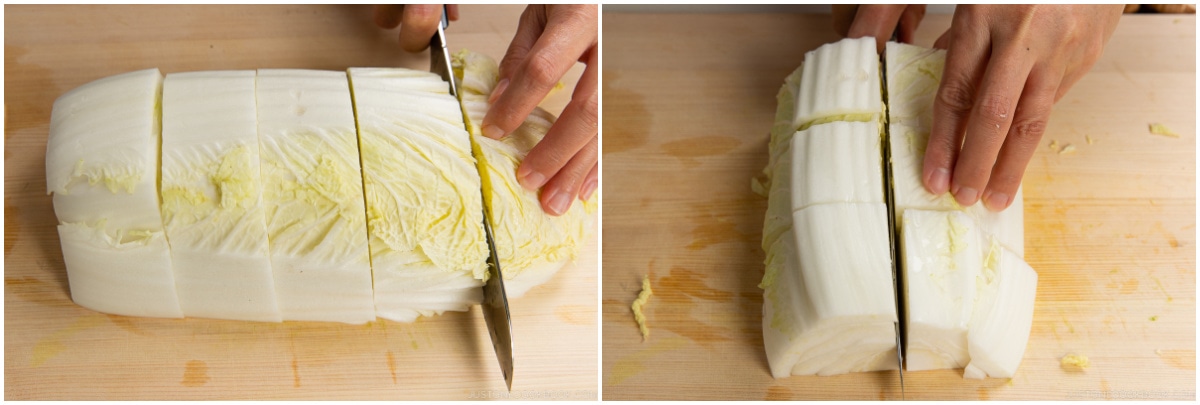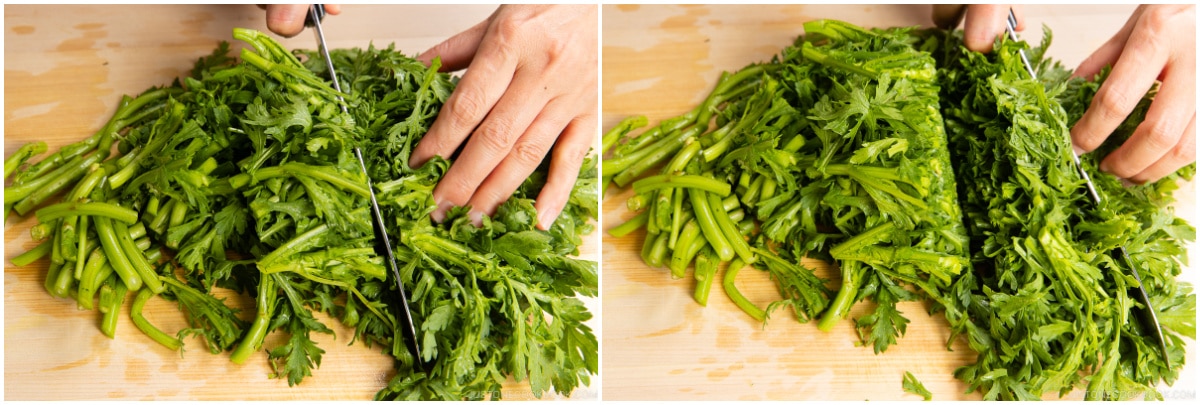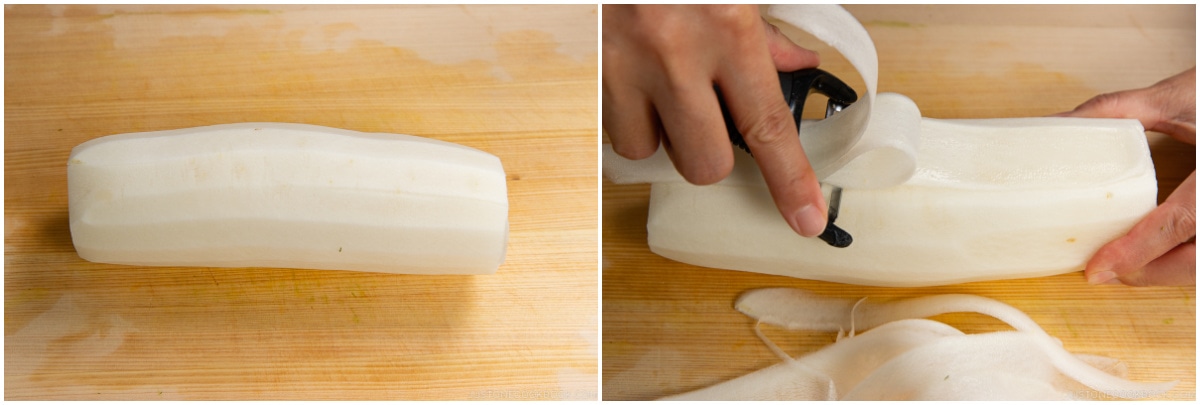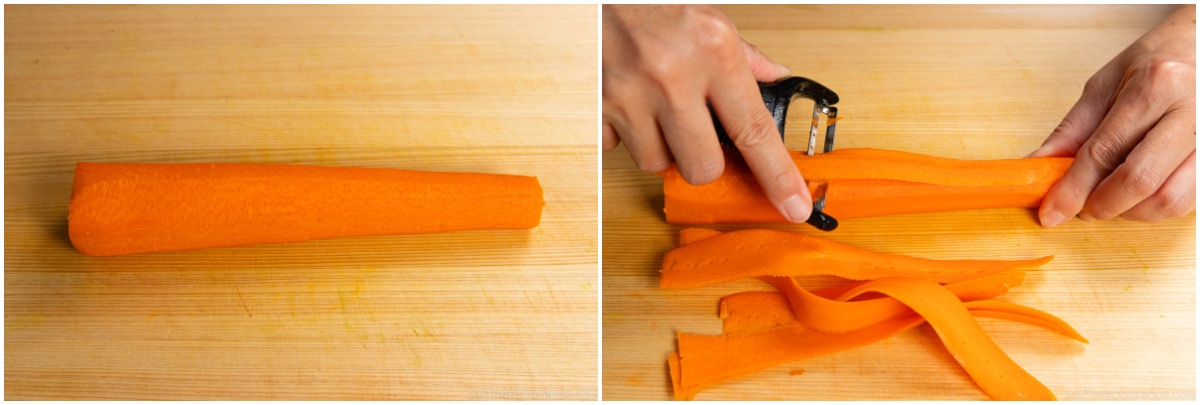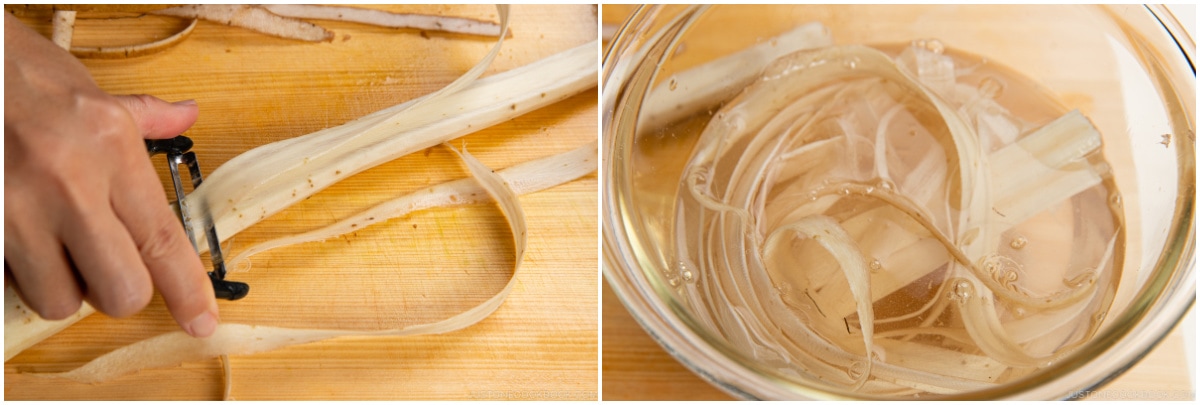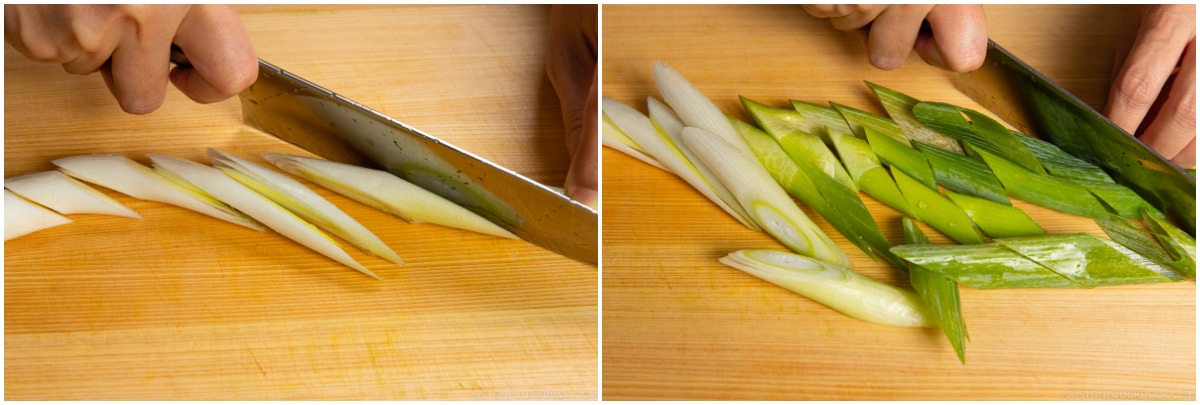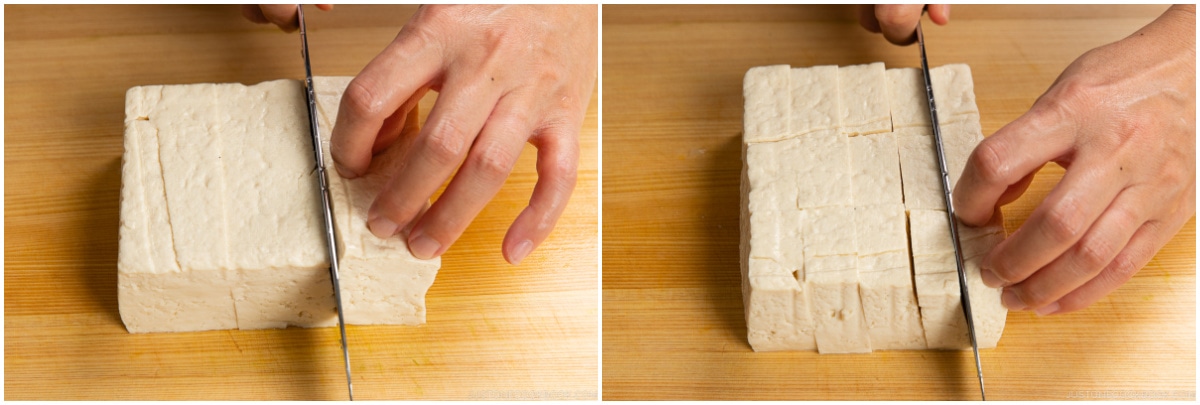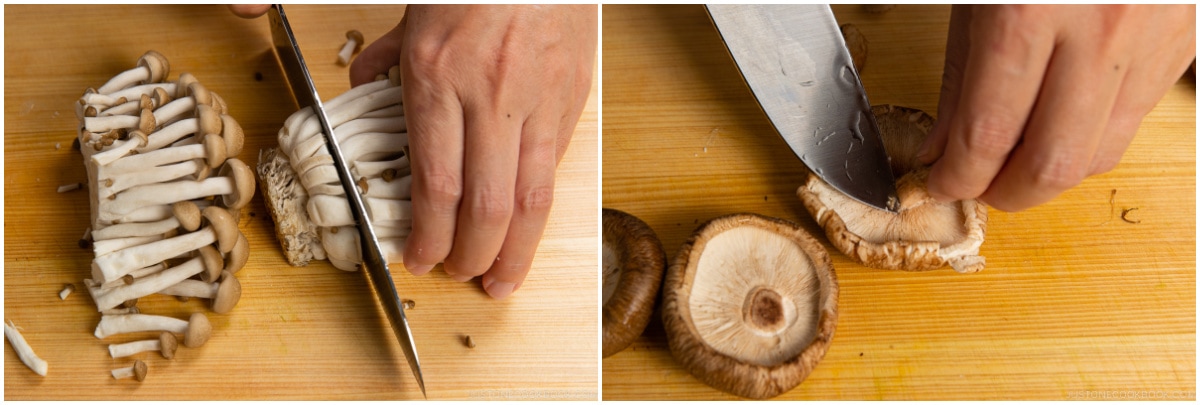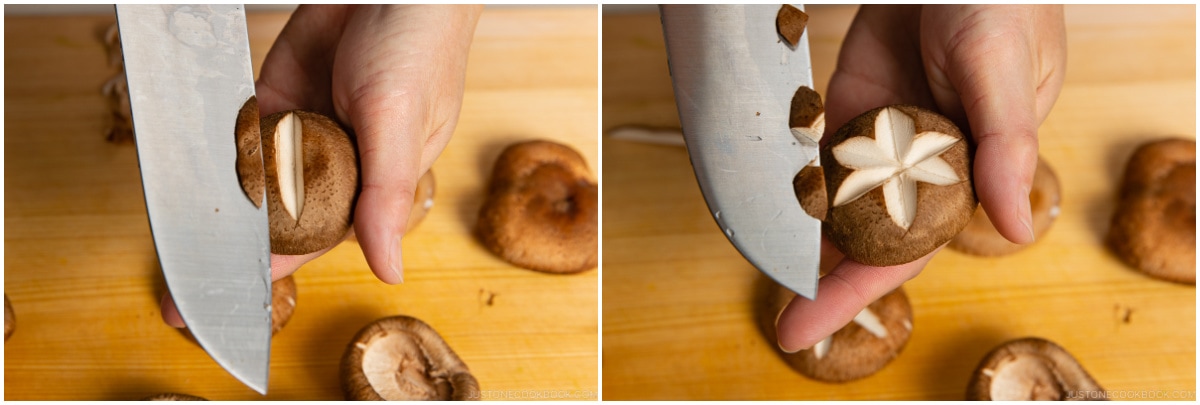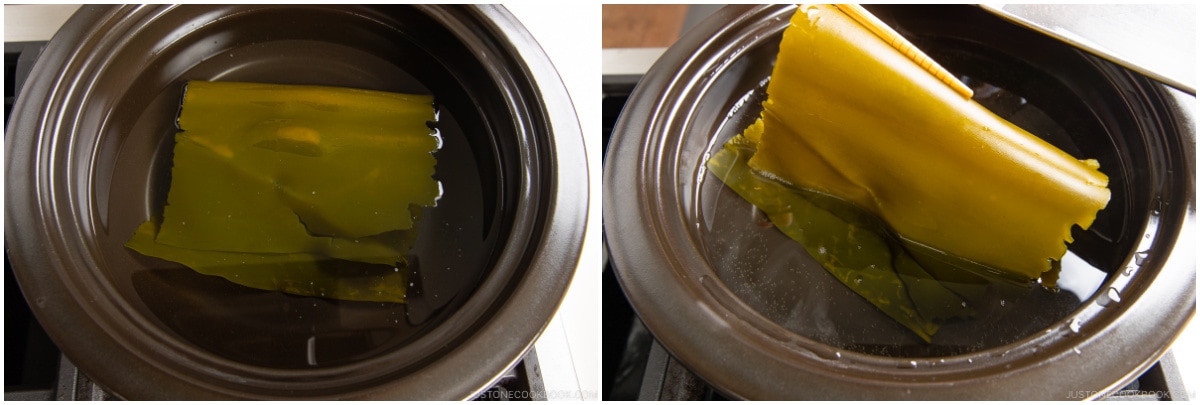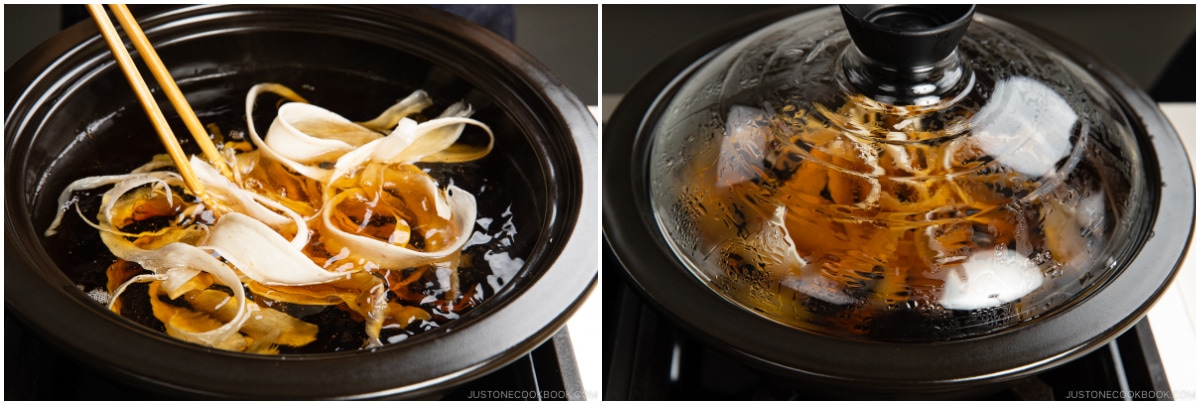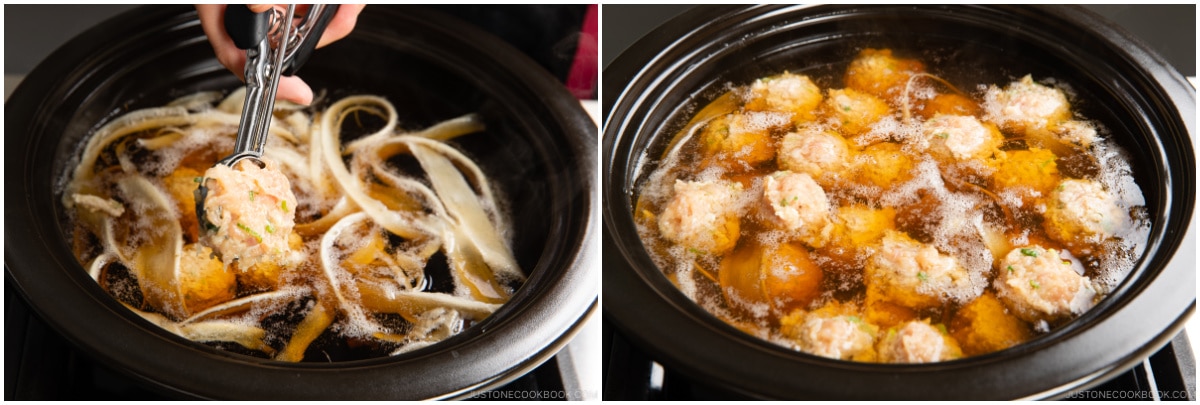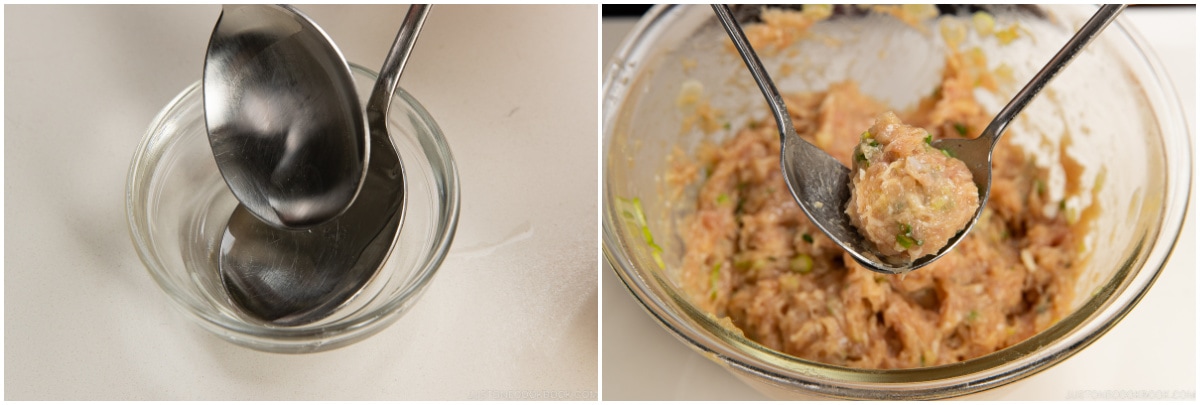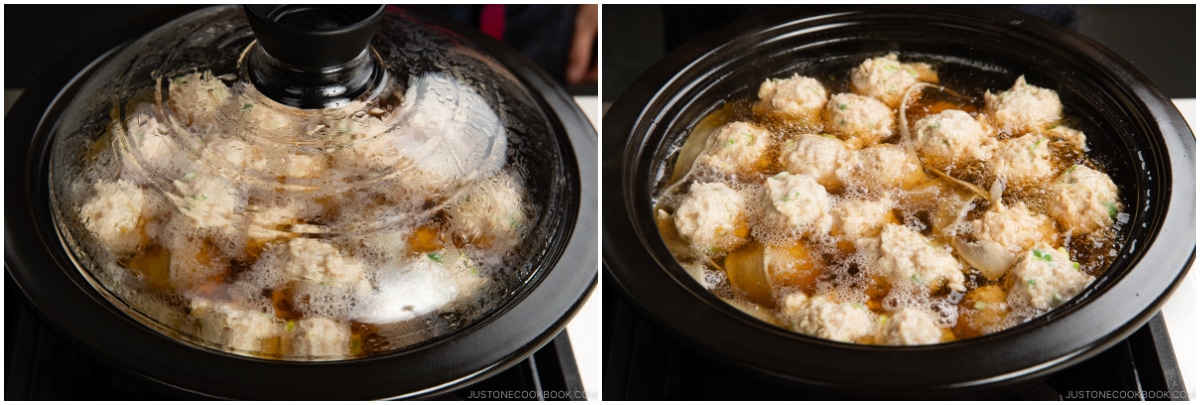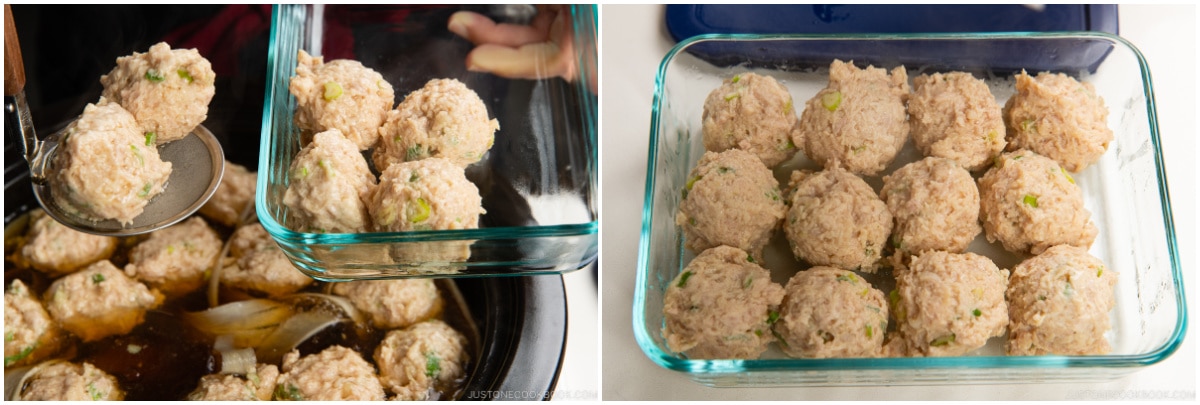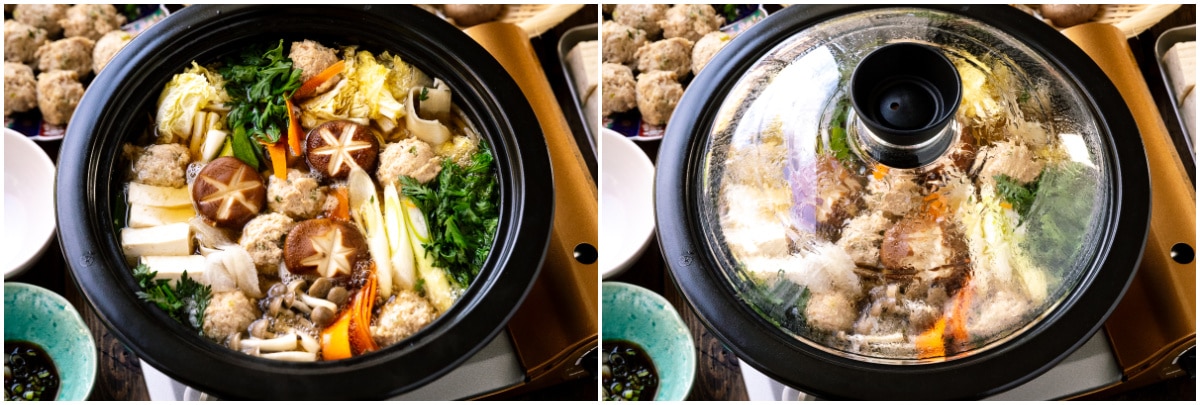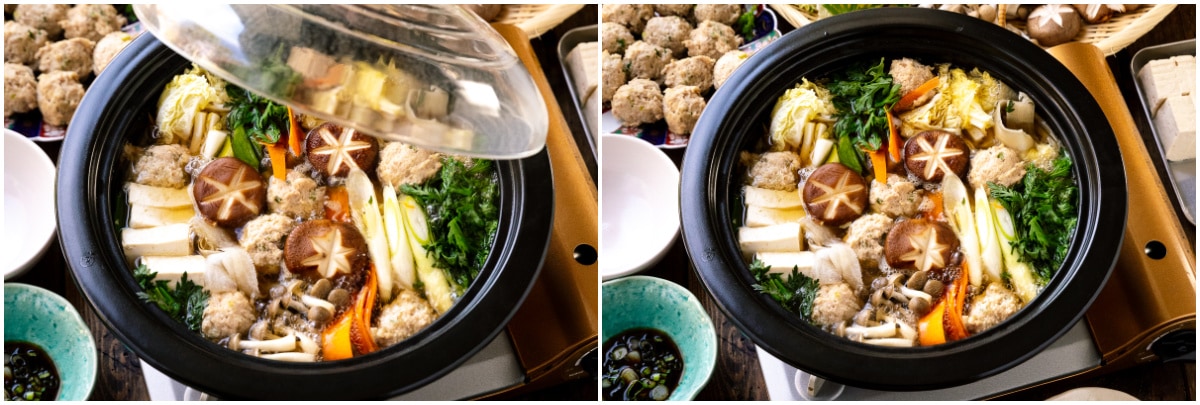As the temperature finally dropped to below 50ºF (10ºC) and the rainy days are to stay for a while, my family and I are excited about having nabemono or hot pot dishes for dinner. Will we ever get tired of hot pot? We don’t think so. There is a wide variety of hot pots to enjoy—each with its unique flavor and character, special ingredients, and dipping sauces. If you are new to Japanese hot pot, check out my guide to nabemono and popular hot pot recipes. It will be a good introduction to start! Today’s hot pot is all about delicious fluffy chicken meatballs that are cooked with other healthy ingredients. This chicken meatball hot pot is called Tsukune Nabe (つくね鍋) or Tori Dango Nabe (鶏団子鍋) in Japan.
What is Tsukune?
Tsukune (つくね) is Japanese chicken meatballs that are typically skewered and cooked yakitori-style (grilled over charcoal, but also can be fried, baked, or boiled). Tsukune is made of ground chicken mixed with fresh ginger, eggs, and scallions, formed into balls or oblong shapes, and skewered into bamboo sticks. Besides grilling, we also enjoy ball-shaped tsukune in hot pot dishes. If you order tsukune at a hot pot restaurant in Japan, you will get a bamboo tsukune maker filled with raw ground chicken mixture. You would use a bamboo scraper (see above) to push out a small portion of the mixture into the simmering broth. The circular bamboo tube helps make a nice round meatball. At home, however, I recommend making meatballs ahead in the kitchen to avoid cross-contamination. Plus, you can make more meatballs, if you like, and keep the precooked meatballs in the freezer for the next hot pot occasion. Or save them for another recipe.
The Best Cookware for Hot Pot
Hot pot dishes are often cooked and served in a donabe (土鍋) or Japanese clay pot at the table. I have collected different types of beautiful donabe over the years, but ever since I was introduced to the Hario Donabe Ceramic Cooking Pot with Glass Lid several years ago, I’ve been exclusively using it. I love this pot because:
The clear glass lid makes it so easy to see the ingredients inside. We can see if the broth is simmering or whether the ingredients are being cooked properly. The earthenware pot is thick and very sturdy. The rounded corners make it less likely to get chipped while handling. The size of the pot (large) is perfect for 4 servings. Last but not least, it’s such a beautiful design! Not too modern, not too traditional, just the right balance for my liking!
Can I Use an Electric Hot Pot?
How to Make Tsukune Hot Pot
Ingredients You’ll Need
For the broth:
Dried kombu Seasonings: sake, mirin, soy sauce
For the tsukune:
Ground chicken Green onions/scallions Egg Ginger Seasonings: salt, sake, soy sauce, potato starch (cornstarch)
For the hot pot:
Napa cabbage Shungiku (chrysanthemum greens) Daikon radish Carrot Gobo (burdock root) Tokyo negi Medium firm tofu Shiitake mushrooms Shimeji mushrooms
For serving:
Ponzu sauce Green onions Optional: yuzu kosho, sansho pepper, yuzu zest
Ingredients Substitute
It’s a hot pot, so add-in ingredients are flexible. You can go as-you-like with the type of vegetables, mushrooms, and tofu. Having said that, I personally wouldn’t add broccoli florets, for example, just because I am not used to eating it in the hot pot. However, if you have a hard time finding typical hot pot ingredients like napa cabbage and shungiku (chrysanthemum greens), you can definitely use what is available to you (use discretion as some veggies would work better than the other). On the other hand, tsukune is commonly made with ground chicken. I wouldn’t make it with ground beef, but maybe pork is okay. I have never made it as I expect tsukune to be chicken. Some people like to flavor the soup broth with miso, but I leave it out for a more delicate taste. For a vegan/vegetarian-friendly version, you can make your vegan meatballs and use them for this recipe. Everything, besides tsukune (chicken meatballs), is vegan in this recipe.
Overview: Cooking Steps
Chicken Meatball Tips
Add ginger and sake to remove any gamey smell. Ginger kills any unwanted odor from the meat. Don’t add sake too much as you don’t want to add liquid to the mixture. Knead the mixture with chopsticks or hands until pale and sticky. To get a fluffy texture, it’s important to vigorously knead the mixture until sticky and pale in color. Chill the mixture in the fridge to firm up. To form a nice ball shape, it’s important to chill the mixture in the refrigerator until you’re ready to cook. This helps firm up the fat. Use a medium size cookie scoop or two spoons to form nice ball-shaped meatballs. I like using this cookie scoop (1.5 Tbsp). You can make meatballs ahead! You can store the cooked meatballs in an airtight container and keep it in the freezer for up to a month. It’s very convenient when you already have meatballs in the freezer for the next hot pot or noodle soup, etc.
Hot Pot Cooking Tips
Remember the cooking order. Start cooking from the ingredients that can yield flavors to the broth such as chicken meatballs and gobo. Then, add tough ingredients that require cooking for a long time, including daikon, carrots, and thick white parts of napa cabbage. At this time, you can also add medium-firm tofu to absorb more flavors. Lastly, add soft and leafy vegetables that cook fast. Keep the hot pot simmering, not boiling. Don’t over boil and keep an eye on the broth amount. If the broth is reduced a lot, add water. Don’t worry about diluting at this stage as the broth flavor is strong after cooking for a while. Do not overcook your ingredients. Most of the ingredients are cut into bite-size pieces and thin slices, so they cook very quickly. Always keep an eye on the vegetables and meat you add to the soup. Divide all the cooked food into everyone’s bowls. While you’re eating the first round, you can cook the next round of food, covered, in the pot. This way, you can cook the ingredients after and avoid opening and closing the lid. Turn off the heat and take a break. If the speed of cooking is overwhelming, simply turn off the heat when the food is cooked through. A clay pot is good for retaining heat.
I hope you enjoy this hot pot recipe! Wish to learn more about Japanese cooking? Sign up for our free newsletter to receive cooking tips & recipe updates! And stay in touch with me on Facebook, Pinterest, YouTube, and Instagram.
